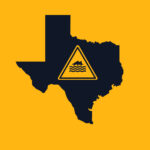By Paul Schlienz
You can’t have hospitality without customer service.
Customer service lies at the very heart of the hospitality industry, and making it as superb as possible is much on the mind of every successful restaurateur or hotelier. Hospitality, after all, is about being hospitable and giving your guests such a great experience that they’ll want to come back again and again and again.
Scott Snofsky, current general manager of Delta Hotels by Marriott Phoenix Mesa, in Arizona, and former general manager of Hilton Garden Inn Bellevue, learned a valuable lesson about customer service at the first hotel where he was employed.
“When I went through my first orientation, it’s always stuck with me because the question was ‘What does real customer service mean?’” said Snofsky. “And the answer that was given by the HR director was, ‘You get the elephant in the ballroom,’ meaning if you’re asked to do something, you find a way to make it work and make it happen, and she illustrated her point with the example of an Indian wedding, where the hotel couldn’t figure out how to get an elephant in the ballroom, but ultimately, they managed to do it. She said that is great customer service.”
There is, however, no one road map to achieving this goal of excellent customer service.
“There’s no magic sauce,” Snofsky added. “There’s no secret ingredient. There’s nothing where you can say ‘Presto!’ and it works. It’s a grind. It’s paying attention to your staff. It’s having them pay attention to your guests. It’s having them pay attention to things they’re working on, and it’s consistency, follow through and making sure they’re doing the same thing every single day.”
Making connections
Ron Oh, general manager of the Holiday Inn Express & Suites North Seattle – Shoreline, speaks of customer service in terms of creating connections with guests.
“They walk through as a stranger and once you create a personal connection with them, that all changes,” said Oh. “Guests need to be treated as friends of the family that we don’t know. There’s courtesy in being polite to someone off the street, but if someone’s like a friend of the family and they come into your property, your main goal is to make them happy, make sure they feel welcome and make sure that they enjoy their stay. If you can create that, then you have excellent customer service. Once you’ve created that connection with a guest, the guest will reciprocate.”
Much like Oh, Frank Welton, general manager of Seattle/Northwest Hilton, also speaks of creating connections.
“You need to show that you care, that you’re connecting with the customer and you’re looking to provide them with whatever experience they may be looking for,” said Welton.
According to Welton, excellent customer service is about being proactive and anticipating what a customer might need as best as staff members can and offering a product and experience that can meet or exceed their expectations.
Jeff Morgan, director of operations at HopsnDrops, insists that customer service, in the hospitality industry, begins with thinking of what might be called “customers” in other industries as “guests.”
“We always refer to our guests as guests versus customers,” said Morgan. “That is a great starting point in developing a culture that is truly focused on hospitality.”
Morgan offers five principles of hospitality.
“It starts with caring,” said Morgan. “You need to understand that each guest is a person who deserves to be treated with dignity and respect. The next principle is execution, which means having a great service model and striving to execute it with every guest. Then there’s ‘kina’ole.’ In Hawaiian, that means doing the right thing at the right time for the right reason the right way for the right person the first time. And finally, there’s recovery, meaning we all make mistakes, but a great recovery can win a guest for life.”
For Snofsky, great customer service all boils down to the Golden Rule.
“You need to ask yourself what you are doing compared to how you would want to be treated,” said Snofsky. “Acting honestly is a big part of it. Sometimes something will happen. Somebody will give you a $50 tip by mistake, and you’ve got to let them know. Just do the right thing. Just be a good person. I think the rest of it follows.”
Service vs. hospitality
Service and hospitality are different, according to Morgan.
“You can deliver an excellent product in a timely fashion but if you do not connect with the guest in some positive way — there will be a gap in the hospitality aspect of that guest’s experience,” said Morgan.
Arnold Shain, founder of Restaurant Group, Inc., and a consultant with many years of experience in the hospitality industry, uses bartenders, who are as much about providing conversation and a listening ear as much as they are about mixing drinks, to illustrate the difference between service and hospitality.
“Look at it from a bartender’s standpoint,” said Shain. “The bartenders who are very successful are not the ones who make these great drinks. They’re all about taking care of the guests. Hospitality puts guests first.”
Solving problems
Anyone who’s ever worked in customer service will realize that problem resolution is a major part of the job.
“It’s actually a difficult thing to complain,” said Oh. “Most of the time, they’re complaining because they have a good reason, not because they want to attack you or they want to make you feel bad. Understanding them means you are on their side, you actually want them to benefit, you want to take care of them and you want them to leave happy. If you can do that, that’s truly great customer service.”
Staff also need to keep in mind that customer complaints do not mean they are under attack.
“When you’re dealing with complaints or issues like that, it’s very easy for someone to feel like they’re being attacked,” said Oh. “Getting out of the frame of mind that it’s just about us is very important.”
Oh says that properly resolved customer complaints can be opportunities to create even more loyal customers.
“I once read a study that said If someone is satisfied, they’ll come back 50 percent of the time, but If someone has a problem and it’s resolved, they’re 70 percent more likely to come back,” said Oh. “Even if there was an issue, if they feel it was taken care of, they’re going to be happier.”
Training
How do you train employees to be hospitable and provide customer service? There is no one definitive answer.
“There’s a lot of things that go into training,” said Welton. “We have online training that talks about all different types of service, how to be proactive, how to respond to problems, to show empathy. We have both written training and trainers come in and specialize in certain aspects of customer service and training, depending on who the customer is, what their profile is. Then we do role playing as well with the team so they can practice on situations.”
Shain describes the training process as one of “taking talent and inspiring it to be the best that it can be.”
For Morgan, it all starts with finding people who are naturally hospitable.
“First, we hire team members that truly love people and like being of service to them,” said Morgan. “Then we focus and train hard on each point where the team interacts with the guest.”
Snofsky says managers need to be supportive of employees as they learn the ropes of serving customers.
“You just have to be constantly present,” said Snofsky. “Every hotel brand has the five steps to this or the 10 steps to that. Everyone watches a video with smiling people, but none of that matters if in the moment people are left on their own, they don’t have a model for that behavior when things go sideways because it always goes sideways. They need to have somebody with them, watching them, knowing what they’re doing is important and they need to know that somebody cares about the job they do. I don’t know if that’s training, but that’s how to ensure great service. It’s muscle memory. It’s all about doing it over and over again.”
Creating a customer service culture
Customer service doesn’t happen by accident.
Morgan tells HopsnDrops’ managers to “Be a great role model. Catch the team doing it right and celebrate it. Provide deliberate practice by breaking down the service model into small parts and practicing them so they are automatic. Once the technical side of a service step is automatic, the team member can really focus on providing a great positive experience for each guest.”
According to Welton, management’s role in creating an environment where excellent customer service will thrive is a combination of ensuring employees are getting the right training and the correct onboarding and acclimation with a follow through on that with day-to-day supervision.
“Customer service is a culture,” said Oh. “It’s a manager’s responsibility to ensure that we have a specific culture in customer service and that it’s followed. When it’s followed, you need to make sure those managers are backing up those decisions. Likewise, employee relationships affect customer service, too. If you have great trust in your relations with your employees, you’ll have a much better managed business.”
(May 2019 Magazine)















